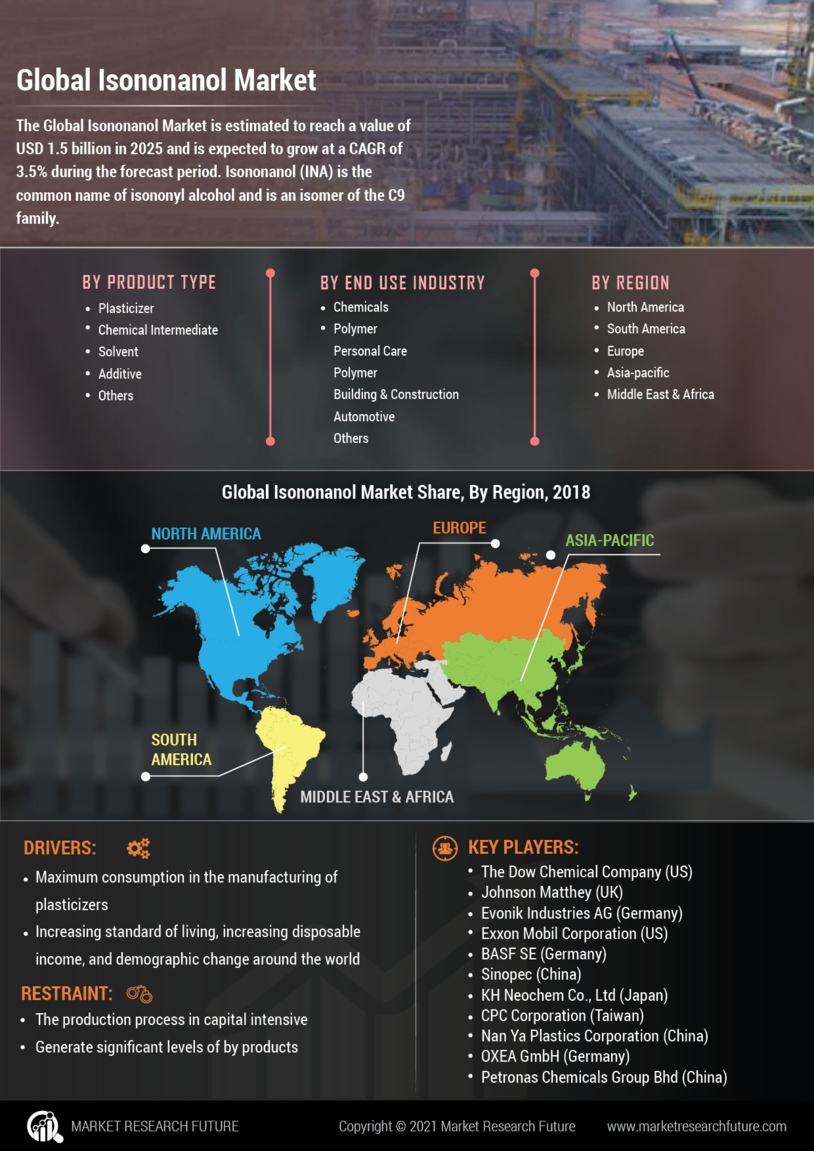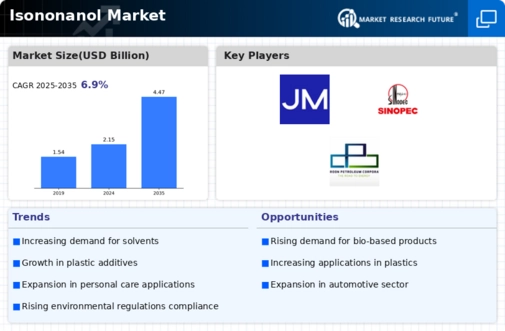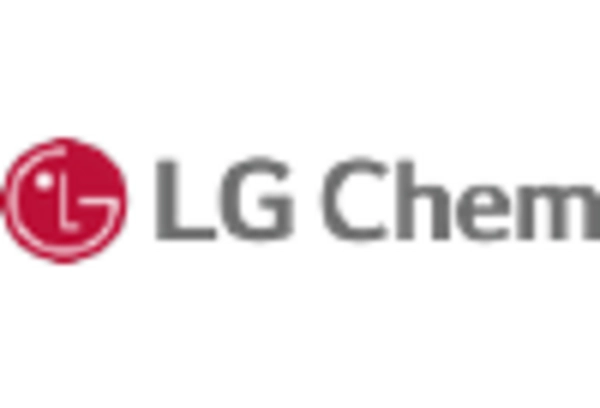Rising Demand for Plasticizers
The Isononanol Market is experiencing a notable increase in demand for plasticizers, which are essential additives in the production of flexible plastics. As industries such as construction, automotive, and consumer goods continue to expand, the need for high-performance plasticizers derived from isononanol is likely to grow. In 2023, the plasticizers segment accounted for approximately 30% of the total isononanol consumption, indicating a robust market presence. This trend is expected to persist, driven by the ongoing shift towards lightweight materials that enhance product performance. Furthermore, regulatory pressures to replace phthalate-based plasticizers with safer alternatives may further bolster the demand for isononanol-based products, thereby solidifying its position in the market.
Growth in Personal Care and Cosmetics
The Isononanol Market is witnessing a surge in applications within the personal care and cosmetics sector. Isononanol Market serves as an emollient and solvent in various formulations, enhancing the texture and stability of products such as lotions, creams, and makeup. The personal care industry has shown resilience, with a projected growth rate of 4% annually, which translates to increased consumption of isononanol. As consumers increasingly seek high-quality, safe, and effective personal care products, manufacturers are likely to incorporate isononanol to meet these demands. This trend not only supports the growth of the isononanol market but also aligns with the broader movement towards clean beauty, where ingredient transparency and safety are paramount.
Increased Use in Automotive Applications
The Isononanol Market is significantly influenced by the automotive sector, where isononanol is utilized in the production of lubricants and fuel additives. As the automotive industry evolves, particularly with the rise of electric vehicles, the demand for high-performance lubricants that enhance engine efficiency is likely to increase. In 2023, the automotive segment represented around 25% of the total isononanol market share, reflecting its critical role in this sector. Furthermore, the push for improved fuel economy and reduced emissions may drive manufacturers to seek advanced formulations that include isononanol, thereby fostering growth in this market segment. This trend suggests a promising outlook for isononanol in automotive applications.
Regulatory Support for Eco-Friendly Chemicals
The Isononanol Market is benefiting from increasing regulatory support for eco-friendly chemicals. Governments and regulatory bodies are implementing stringent guidelines aimed at reducing the environmental impact of chemical products. This regulatory landscape encourages manufacturers to adopt sustainable practices and utilize safer alternatives, such as isononanol, which is derived from renewable resources. In recent years, several countries have introduced incentives for the production and use of bio-based chemicals, which could potentially enhance the market for isononanol. As industries strive to comply with these regulations, the demand for isononanol is expected to rise, positioning it as a favorable option in the market.
Technological Innovations in Production Processes
The Isononanol Market is poised for growth due to ongoing technological innovations in production processes. Advances in chemical engineering and catalysis are enabling more efficient and cost-effective methods for synthesizing isononanol. These innovations not only enhance yield but also reduce waste and energy consumption, making the production of isononanol more sustainable. In 2023, the introduction of new catalytic processes has reportedly improved production efficiency by up to 20%, which could lead to lower prices and increased accessibility in various applications. As manufacturers adopt these technologies, the isononanol market is likely to expand, driven by enhanced competitiveness and sustainability.


















Leave a Comment